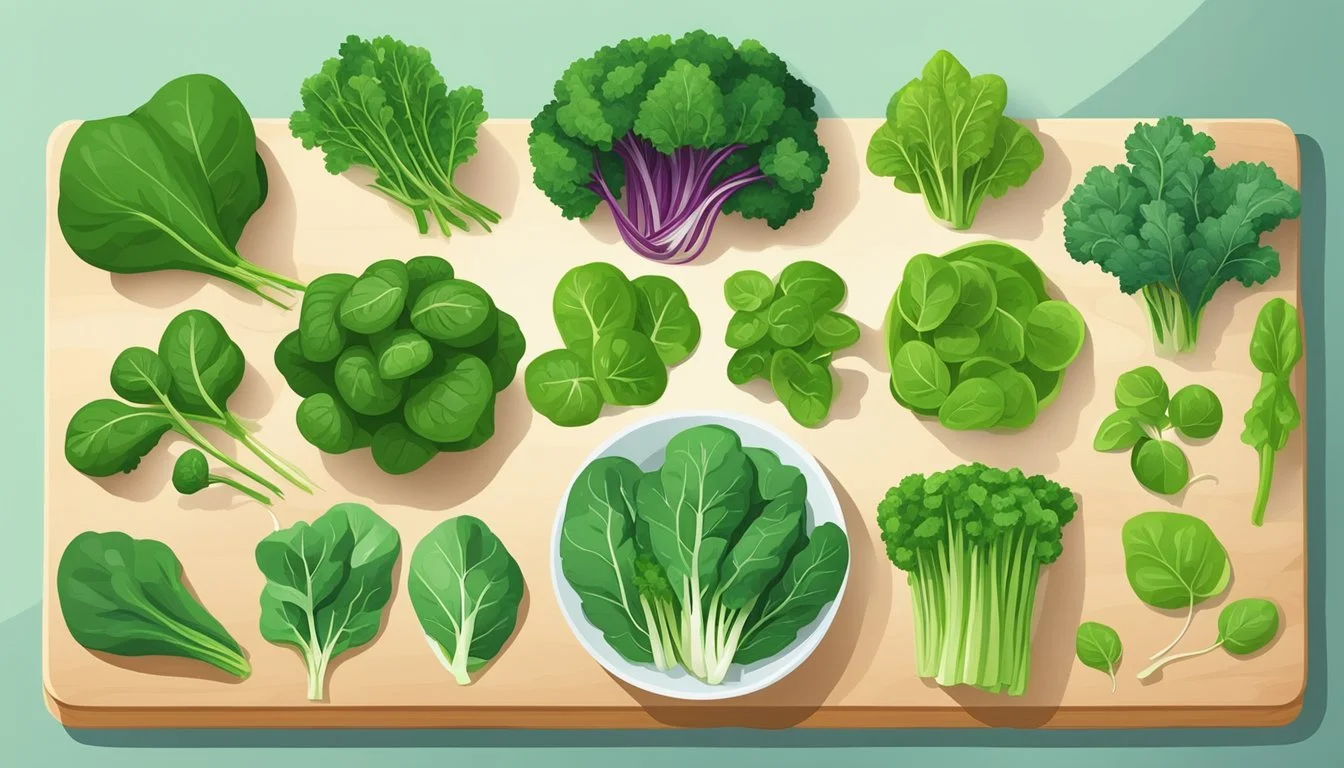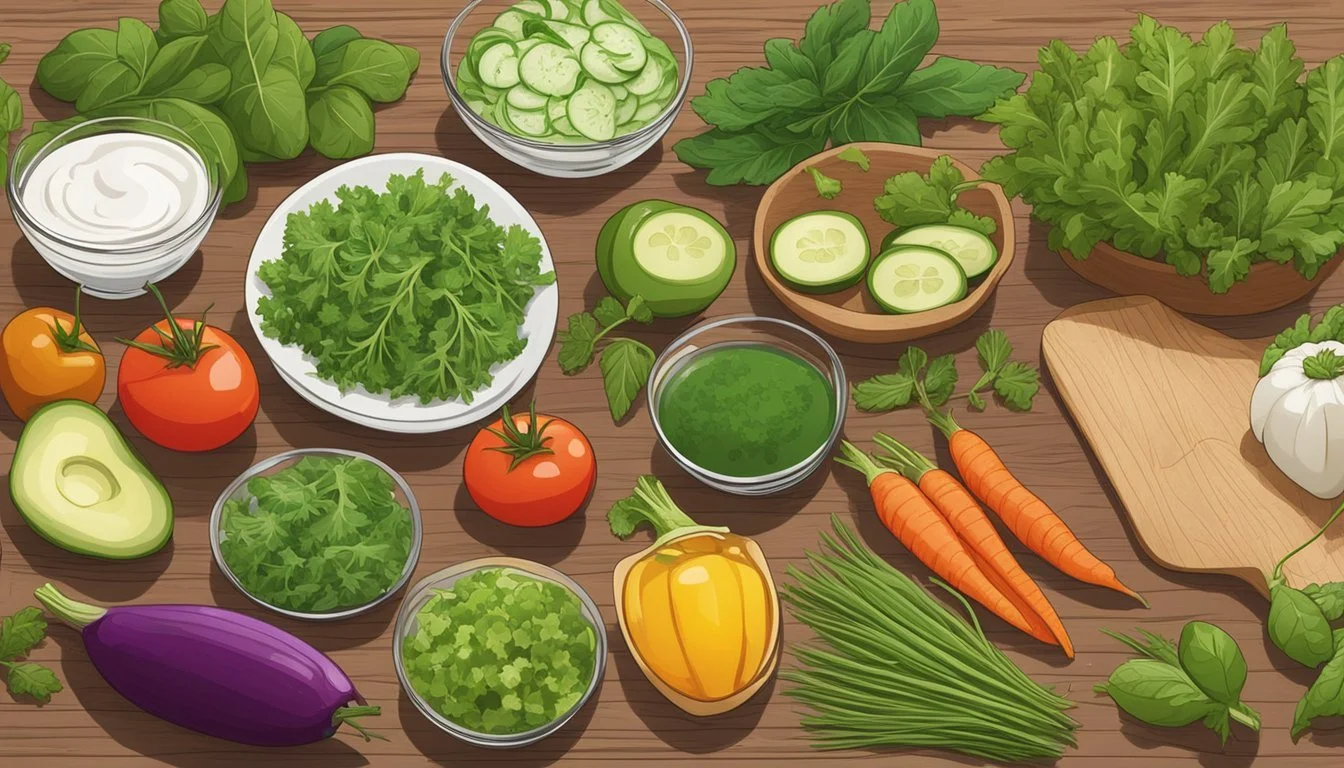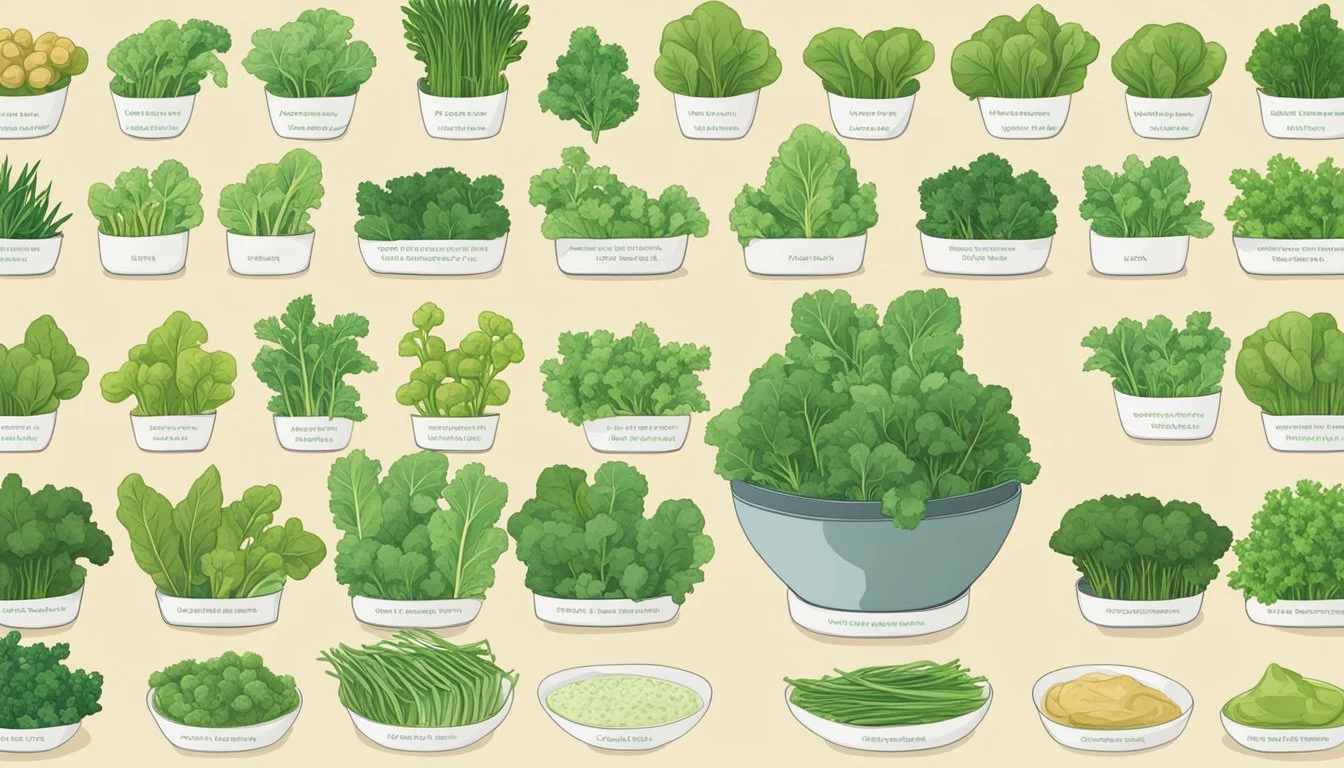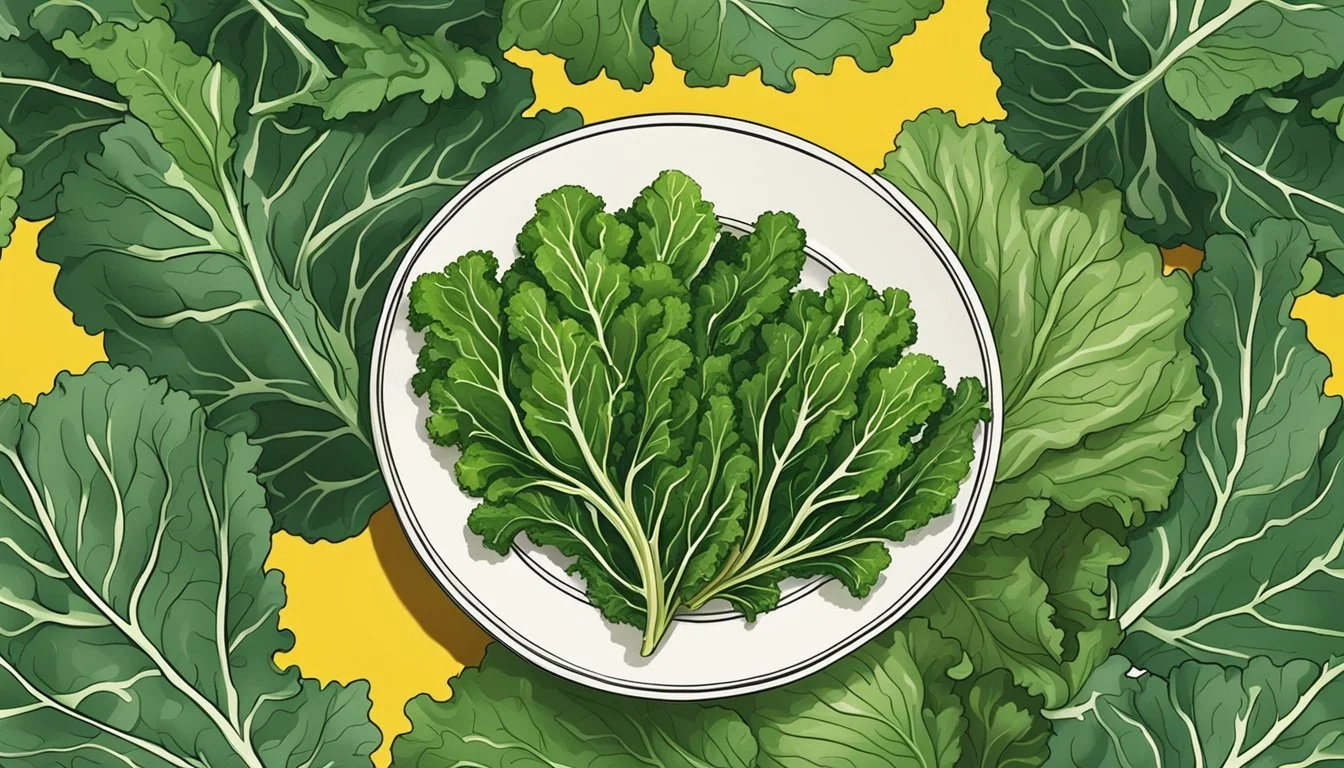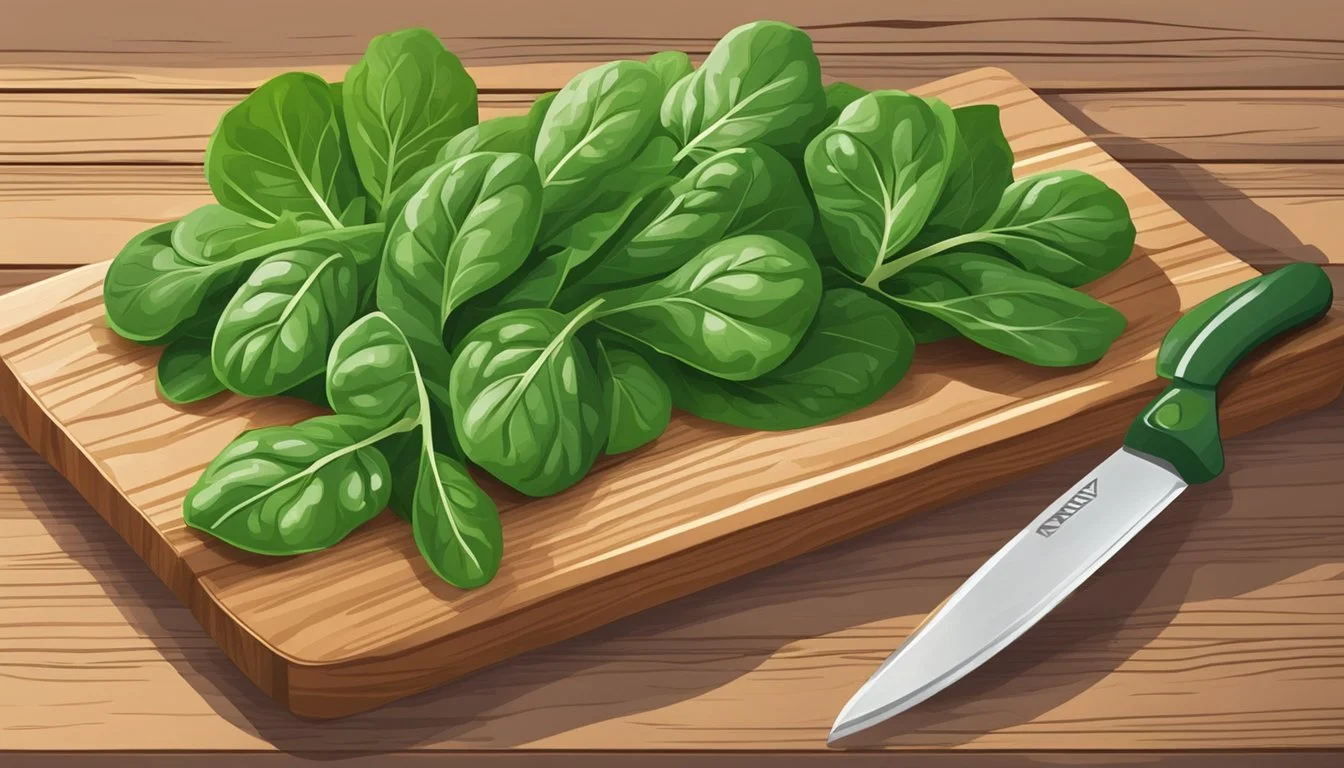Arugula Substitutes
Top Alternatives for Your Salads
Arugula, also known as rocket, is a popular leafy green with a distinctive peppery taste that is cherished in salads (What wine goes well with salads?) , sandwiches (What wine goes well with sandwiches?), and a variety of other dishes. Its bold flavor profile can enhance the simplest of recipes, offering a dimension of taste that is as nutritious as it is delicious. However, not everyone enjoys its pungent flavor, and at times, it may not be readily available. In such instances, having a list of suitable substitutes can be extremely valuable for anyone looking to replicate or replace the unique characteristics of arugula in their culinary creations.
Fortunately, the vegetable world offers a plethora of alternatives that can mimic the flavor and texture of arugula. For instance, watercress provides a similar peppery bite and adds a comparable level of zest to dishes, making it an ideal replacement in many recipes that typically call for arugula. Kale, with its slightly bitter edge, can be massaged to soften its tough leaves, transforming it into a hearty stand-in for arugula in salads and cooked dishes. Other alternatives like spinach, though milder in taste, can be used for those who prefer less spiciness in their meals while still yearning for nutritional benefits akin to arugula.
Identifying the right arugula substitute depends on the specific flavors and textures desired in a dish, as well as the nutritional profile one wishes to maintain. Each alternative brings its own set of characteristics and health benefits, ensuring that the essence of the dish remains intact, even without the original ingredient. Exploring these options not only broadens the palate but also ensures that the journey in taste does not halt when arugula is off the menu.
Understanding Arugula
Arugula, a leafy green with a distinct peppery flavor, is not only a culinary favorite in salads but also holds a rich nutritional profile. Originating from the Mediterranean region, it offers versatility in both raw and cooked forms.
Characteristics of Arugula
Arugula, also known as Eruca vesicaria, is recognized for its small, oakleaf-shaped leaves and a spicy, peppery kick that distinguishes it from milder salad greens. Its leaves are typically dark green with deep lobes, and it grows in low bunches. The intensity of its flavor can range from subtly tangy to strongly peppery.
Nutritional Profile
Arugula is a powerhouse of nutrients, offering a variety of vitamins and minerals with low calorie content. It is particularly rich in:
Vitamins: High levels of Vitamin K, which is vital for bone health, and Vitamin C, important for immune support and skin health.
Minerals: A good source of minerals like iron, essential for healthy blood cells, and calcium, necessary for bone strength.
Nutrient Importance Iron Supports oxygen transport in blood Calcium Vital for bone health Vitamins Aid in various bodily functions
Culinary Uses
Arugula is a versatile ingredient in the kitchen. Its leaves are often used raw in salads, adding a peppery zest that complements many dressings and ingredients. Beyond salads, arugula can be incorporated into a variety of dishes:
Raw: As a topping for pizzas, within sandwiches, or as a garnish for additional flavor.
Cooked: Sautéed or wilted into pasta dishes, soups, and grain bowls.
Its bold flavor can stand up against robust ingredients commonly found in Mediterranean cuisine, making it a flavorful addition to many recipes.
Best Arugula Substitutes
When arugula is unavailable or unwelcome on the palate, several leafy vegetables can step in to provide a similar taste profile. These substitutes range from mild to distinctly bitter and can be used in various dishes.
Spinach as Substitute
Spinach offers a milder flavor compared to arugula’s peppery taste. Baby spinach, in particular, is tender and can closely mimic arugula's texture in salads and sandwiches. It lacks the distinctive spice, but its versatility makes it a top choice when a gentler flavor is desired.
Kale Alternatives
Kale serves as a robust alternative with a slightly bitter taste. It’s best to use young kale leaves for their softer texture, which can be closer to that of arugula. When using kale as an arugula substitute, it can be beneficial to massage the leaves with a bit of olive oil to soften them, making them more suitable for raw preparations.
Endive and Escarole
Both endive and escarole feature a bitter taste that can replicate arugula's boldness in dishes. Endive, with its crisp texture and slightly bitter flavor, can be an excellent substitute in cold dishes, like salads. On the other hand, escarole stands up well to cooking and can be a great arugula substitute in soups and warm dishes.
Watercress Variations
Watercress is a close substitute with a peppery flavor that rivals that of arugula. It works well in both raw and lightly cooked applications, adding a peppery bite to salads, sandwiches, or as a garnish. Watercress, with its small, tender leaves, can be used interchangeably with arugula to add a similar zesty flair to meals.
Substitute Considerations Based on Dish Type
Selecting an appropriate substitute for arugula depends largely on the type of dish being prepared. Each alternative brings its own unique qualities that may complement or alter the flavor profile and texture of the final product.
Salads and Cold Dishes
For salads and other cold dishes where arugula's peppery bite is desired, alternatives such as watercress or baby spinach can be used to maintain a similar texture and level of bitterness. Dandelion greens offer not only the peppery taste but also a slight hint of earthiness.
Watercress: a peppery, crunchy green suitable for salads.
Baby spinach: milder in flavor but adds a tender texture.
Cooked Applications
In soups, stews, and dishes where arugula is cooked, kale can be a sturdy substitute, holding up well to heat. When making a pesto or frittata, one could opt for baby kale or endive, giving the necessary greenery without compromising the structural integrity or the flavor balance.
Kale: robust and holds shape in cooking.
Endive: provides bitterness and crisp texture, works in frittatas and as a pizza topping.
Specialty Recipes
For pizzas and sandwiches, where arugula might be added for a fresh, spicy note after baking, alternatives like radicchio bring both a vibrant color and a zestful flavor. In recipes with arugula such as pesto, where its bold taste is a focal point, substitutions like radish sprouts can offer a comparably spirited kick.
Radicchio: adds color and zest, suitable for fresh applications like pizza toppings.
Radish sprouts: an intense burst of flavor, akin to arugula, for pesto and garnishes.
Additional Substitute Options
When seeking arugula substitutes, it's important to consider the flavor profile and texture desired in dishes. Some alternatives closely mimic arugula's peppery bite, while others provide a milder taste, suitable for a variety of culinary applications. This section explores other possible substitutions that maintain the integrity of dishes originally calling for arugula.
Herbs and Microgreens
For a flavor akin to the peppery sharpness of arugula, dandelion greens and radish greens serve as excellent substitutes, particularly in salads and garnishes. Microgreens, such as those from mustard plants, deliver a similar punch in a diminutive form, perfect for delicate plates where texture is paramount.
Cruciferous Alternatives
Alternatives within the cruciferous family, like kale, cabbage, and bok choy, offer a robustness in flavor and a heartier texture. Mustard greens stand out with their notable piquancy, making them a substantial stand-in for arugula's bold taste. When cooked down, their bitterness diminishes, producing a subtler essence.
Lettuce Varieties
Those seeking a less intense taste can turn to various lettuce types. Romaine lettuce brings a crunchy yet mild flavor suitable for salads and sandwiches. Radicchio contributes a bitter zest, whereas frisée provides a frilly texture with a less pronounced bite. For a softer leaf, mache or purslane can be used for a succulent and slightly sweet alternative.
Nutritional Comparison
When exploring arugula substitutes, it's important to compare their vitamins and minerals content, as well as the promoting health benefits they may offer.
Vitamins and Minerals Content
Arugula is a nutrient-rich green, known for its high vitamin K, folate, and calcium content. In seeking substitutes, leafy greens like spinach, kale, and watercress surface as suitable alternatives due to their similar nutritional profiles.
Spinach is a standout for its vitamin K content, vital for bone health. It also provides folate, essential for DNA synthesis and repair.
Kale offers a rich blend of vitamins, minerals, and antioxidants, including high levels of vitamin K.
Watercress is another suitable alternative, high in calcium and containing a wealth of antioxidants.
Dandelion greens and endive also mirror arugula's mineral content, adding iron and calcium to the diet.
Promoting Health Benefits
The health benefits of arugula and its substitutes extend beyond their vitamin and mineral composition. These leafy greens provide a variety of nutritional benefits.
Arugula is lauded for its antioxidant properties, elements that fight oxidative stress and may lower the risk of chronic diseases.
Spinach contains antioxidants known to promote eye health.
Kale is celebrated for its combination of vitamins, minerals, and antioxidants, which collectively support heart health and immune function.
All of these greens present a nutritional powerhouse that can enhance overall health and well-being.
Taste and Texture in Substitutes
When selecting substitutes for arugula, it's important to consider how the alternative greens will align with the distinctive peppery and slightly bitter taste as well as the desired texture of arugula.
Considering Peppery and Bitter Notes
Arugula is renowned for its peppery taste and bitter undertones. Alternatives that mimic these flavors include dandelion greens, which offer a similar bitterness with a slightly milder peppery profile. Radicchio provides an appealing bitterness but has a less pronounced peppery flavor. Watercress is a suitable substitute that maintains both the peppery and bitter taste, making it one of the closest matches in flavor.
Assessing Crunchiness and Freshness
The texture of arugula contributes to its popularity, particularly the crunch associated with its fresh leaves. Kale offers a pronounced crunch but has a more robust texture and an earthy flavor, which may be too intense for some palates. In contrast, spinach has a softer texture but can act as a substitute in dishes where a gentler crunch is acceptable. Endive features a crispiness that closely resembles arugula's crunch, along with a pleasant bitterness, making it a good choice for those seeking a similar tactile experience.
Culinary Techniques and Tips
Selecting the right substitute for arugula can enhance the dish in terms of flavor and presentation. It involves understanding the cooking techniques and how to effectively use each alternative to match the peppery taste of arugula.
Incorporating Substitutes in Cooking
When substituting for arugula, cooks should consider the strength and flavor profile of their chosen greens. For instance, spinach is milder and can be used liberally, while radicchio offers a bolder, bitter flavor, so one should use it sparingly. In Italian cuisine, replacing arugula with endive in pasta recipes often retains the desired bitter note, while in French cuisine, watercress might be used in potato salads to provide a similar peppery flavor. In cooking, delicate greens like baby spinach should be added at the last moment to prevent wilting, whereas hardier greens like kale can withstand longer cooking times.
Cooking Times for Substitutes:
Spinach: Add at the end of cooking.
Kale: Sauté or bake as desired.
Endive: Grill or incorporate into stews.
Watercress: Briefly cook or use raw.
Presentation and Garnishing
The appearance of a dish is critical in replicating the look of arugula. Purslane mimics the leafy aesthetic and is excellent as a raw garnish. A chef should consider color and texture; for example, finely chopping dandelion greens adds a frilly dimension to dishes, while radish sprouts introduce a pop of color. When serving sides, one can top purslane with olive oil and lemon to maintain that Mediterranean flair, simulating arugula's role in a dish. The shape and volume of the substitute greens may alter the final presentation, but with a careful choice, they can provide both visual appeal and flavor.
Garnish Tips:
Use radish sprouts for a vivid garnish.
Top purslane with a drizzle of olive oil.
Chop dandelion greens for a frilly texture.
Final Thoughts
When one's kitchen runs out of arugula, it's important to have a game plan. Keeping several go-to substitutes on hand ensures seamless culinary creations. These alternatives not only mimic arugula's distinct flavor profile but also contribute their unique characteristics to dishes.
Dandelion Greens: They offer a similar peppery bite, as well as a robust nutritional profile, containing protein, iron, and calcium.
Basil: With its sweet and savory flavor accentuated by minty and peppery notes, basil adds depth to salads, soups, and pizzas.
Watercress: It carries a similar peppery taste, perfect for salads and sandwiches.
Baby Spinach: Tender and mild, baby spinach can serve as a more subdued substitute.
Radicchio: Its spicy and slightly bitter taste can parallel arugula, especially in cooked dishes.
Each substitute brings something valuable to the table. For example, baby kale can be added for its hearty texture, and romaine lettuce works as a crunchier base for salads. Chefs and home cooks alike can experiment with these alternatives to achieve the desired flavor balance.
In terms of culinary tips, one should pay attention to the different intensities of flavors the substitutes present. Milder options like baby spinach might not hold up in a dish where arugula's bold taste is the star. Conversely, something like radicchio could overwhelm a dish if used in the same quantity as arugula.
A well-stocked kitchen that includes a variety of leafy greens can elevate a meal and provide a nutritious boost, all the while keeping the spirit of the original recipe intact.




